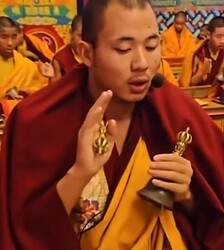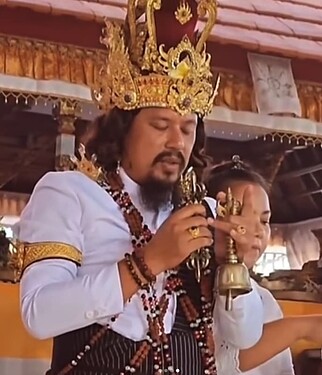Hello Master Maoshan @Maoshan_Wanderer
My apology for tagging you here because I couldn’t send a PM. So, I wanted to ask for your insight.
Long story short, I met a balinese cultural scholar, he is quite reputable as he was entrusted to guide Jaggi Vasudev a.k.a. Sadhguru about balinese culture and its evolution, during his visit to Bali. I was enquiring him the similarities in regard of Tantra aspect within the culture of Bali and that of Tibetan Buddhist.
Tibetan Vajrayāna Buddhist Monk holding Bell and Vajra
I was pointing out that “Tantric aspect of Buddhism become a linking key between syncretism of Buddhism and Hinduism’s Shaiva Tantra within Indonesia, thus result in The Ciwa-Buddha, which currently a denomination of Hinduism concentrated on both the island of Java and Bali.” and then I enquire “So, can it be said that in Bali has utmost similarities with Tibetan Buddhism? or perhaps, influenced by it?”
Balinese Ciwa-Budha High Priest (Buddha) holding Bell and Vajra prior performing ritual
His reply was intriguing
"Bali is not influenced by Tibet.
The tradition centered in Nalanda split into two, with one branch going to Swarnadwipa-Yawadwipa and the other to Tibet.
Mahayana in Sumatra even became one of the foundational roots of Tibetan Vajrayana. Mahayana in Sumatra also developed in parallel in Bali. The Nalanda tradition is very important to revisit as a reference because many of Nalanda’s texts and manuscripts were preserved in Tibet, where they became a foundation."
I have to respect this person is a knowledgeable scholar of Nusantara (Indonesia), at the same time I have to acknowledge that he is neither from Tibet or a practicioner of Vajrayāna.
His reply sounds very intriguing, but without your clarification, I feel resistance to accept the part of “Mahayana within Sumatra being one of foundational roots of Tibetan Vajrayāna”. I feel like there is more nuance to it right?





